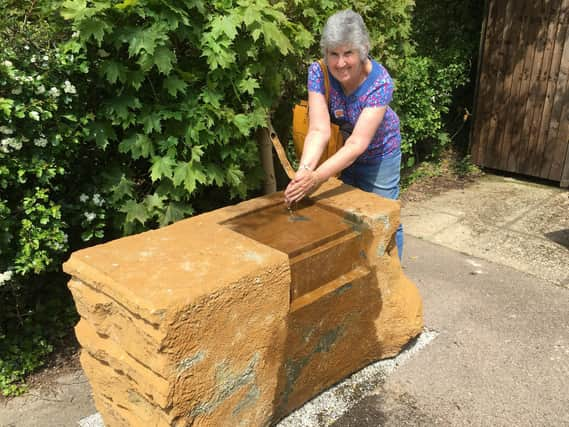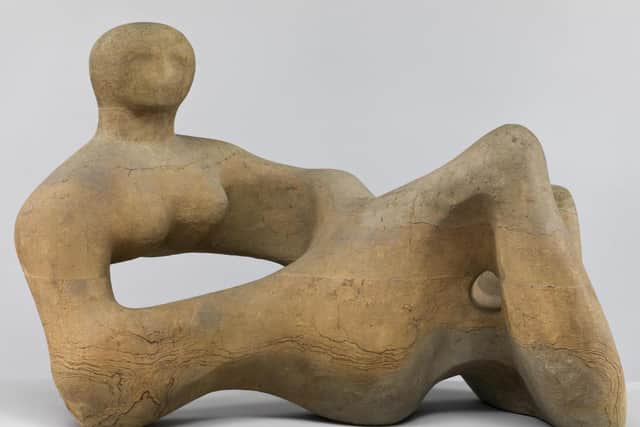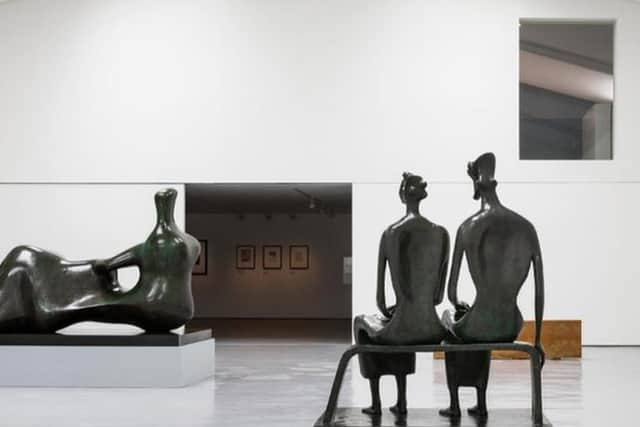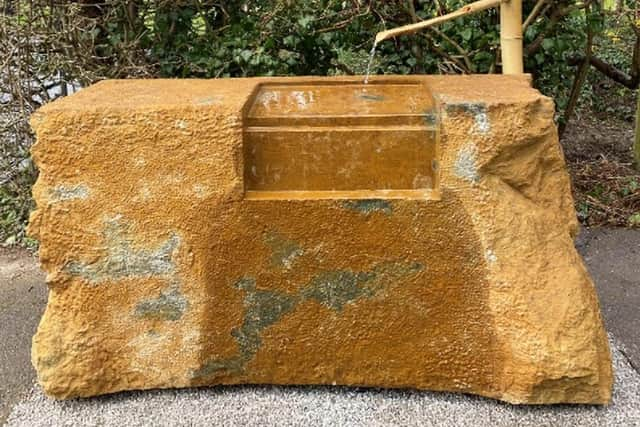Sculptor Henry Moore's love for working with Banburyshire's Hornton stone is a focus of a post-Covid exhibition


In a fascinating summer exhibition focused on touch, the sculptor's love of our local stone has been intertwined with the unimaginable Covid restrictions, as show curator, sculptor Edmund de Waal has made an amazing hand-washing feature out of Hornton stone.
Ironically, the exhibition, at the late sculptor's studios in Hertfordshire, was planned to focus on touch and the hand before constant sanitising could even be imagined. The show was delayed because of the pandemic and it has subsequently taken on a new meaning. Visitors are encouraged to use the Hornton hand-washing sculpture to clean their hands so they may touch and feel the wonderful pieces on display.
Advertisement
Hide AdAdvertisement
Hide AdAmong those to see and wonder at the exhibition when it opened were Roger and Lynn Corke of Hornton. Staff at the exhibition were delighted to welcome the couple.


"The beautiful stone that gives the villages of Banburyshire their unique character was also loved by Britain’s most famous sculptor," said Mr Corke, a film-maker.
"Hornton Stone was Sir Henry Moore’s favourite medium whenever he sculpted in stone and this exhibition has opened with new contemporary pieces created to celebrate it.
"It is called This Living Hand and visitors are encouraged to touch Moore’s sculptures. But curator Edmund de Waal faced a problem - how can you allow people to touch the same objects in a pandemic? He solved that problem by carving a washbasin out of a block of Hornton Stone, hewn from the quarry at Great Tew, where visitors wash their hands after first rubbing them with sanitiser. They can then touch Moore’s sculptures safely," said Mr Corke.
Advertisement
Hide AdAdvertisement
Hide Ad“They all knew about Hornton Stone, of course but they didn’t realise that it was named after a real village. We showed them a photograph of where we live and they were amazed to see an entire village constructed of the stone they knew so well.”


The exhibition also features a series of Hornton Stone benches where visitors can sit and admire Moore’s work.
Moore became interested in stone as a medium for sculpture when an art student and was most attracted to English stones, of which Hornton was one of his most favoured. English stone varieties were more affordable and easily obtainable and they were stones that had not been used before for sculpture, giving his work originality and a sense of the exotic.
Moore visited the quarries, using stone from Edge Hill where he bought green and brown Hornton stone used for the sculpture Reclining Woman (1930).
Advertisement
Hide AdAdvertisement
Hide AdSpeaking of Recumbent Figure, which is in The Living Hand exhibition, Moore said: "...because the stone the figure is carved in (Hornton stone) can only be quarried in limited thickness, the figure had to be made of three horizontal layers of stone, which are dowelled and cemented together. It’s perfectly sound to do that, because the stones are laid on their natural beds, as they should be in ordinary building - but it means that in moving it about, it should not be lifted except from the bottom, so that there’s no risk of any separating."


In an article for The Tate, Sebastiano Barassi and James Copper of the Henry Moore Foundation said: "One of the reasons for Moore’s preference in his early career for rougher and vivid stones such as Hornton was the fact that, unlike white marble and alabaster, they do not look pristine even when freshly carved. Moore tended to use Hornton stone for heavier, more powerful forms, saving marble and alabaster for the more serene works."
The loan of Recumbent Figure to the USA over several bitter winters of the war, Moore discovered that Hornton 'a warm, friendly stone that I like using – is not suitable for exposure in intemperate climates'.
To see more of this article go to this page. Alternatively Google 'Henry Moore and Stone: Methods and Materials'.
This Living Hand continues at the Henry Moore Studios in Perry Green, Hertfordshire, until October 31.